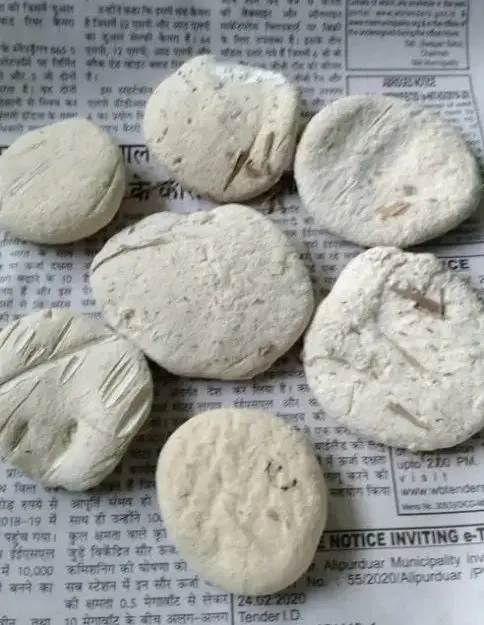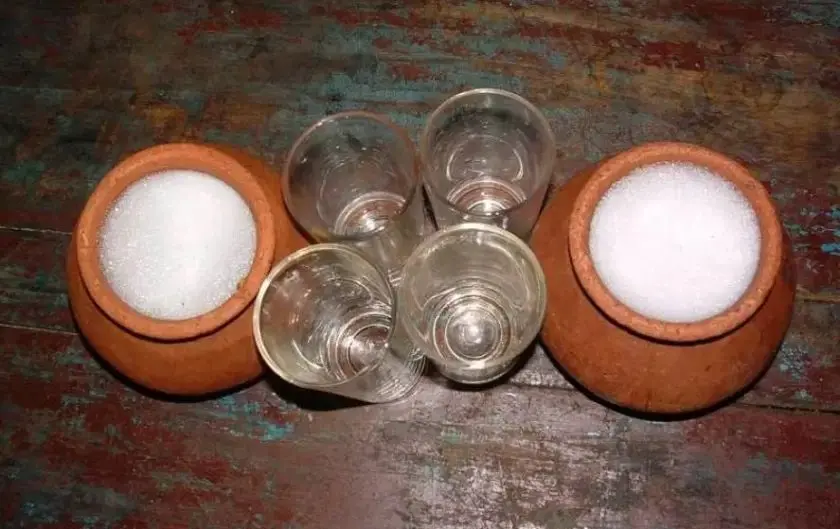Handia is a traditional Indian low-alcohol rice-based drink, also known as rice beer. Jandia plays a huge role in ritual ceremonies such as weddings, birthdays, funerals. This alcohol is especially common in the states of Bihar, Jharkhand, Odisha, Madhya Pradesh, Chhattisgarh and West Bengal.
It is difficult to trace the history of this drink, especially since at least two tribes attribute to themselves its invention – Munda and Santal. But, probably, people living in these territories knew how to ferment fruit juices and other liquids as early as 8000 BC, and the first official mention of this process is already found in the Rig Veda (XV century BC).

The word “handia” may come from “handi” – a traditional Indian pot with a wide mouth.
Technology
To make the Jandia drink, pressed herbal tiles “wound” (another name is “bakhar”) are needed. This component is made from various herbs, roots, leaves, tree bark and consists of approximately 20-25 ingredients. The wound replaces the yeast and starts the fermentation process in the drink.
First, the herbs are collected in the surrounding forests, dried in the sun and ground into powder. Then rice is soaked in water, allowed to swell, ground into a homogeneous mass and also dried. Finally, grass dust is mixed with rice flour in a ratio of approximately 1: 2 and the resulting mixture is rolled into balls – these are the finished tiles or briquettes wound.

Today, many plants are rare or considered extinct, so sometimes a wound is made from as few as 10 herbs.
To make the jandia itself, you need rice of a certain variety – Oryza Sativa L. It is boiled, cooled on herbal mats and placed in a khandi clay pot along with a couple of wound balls (approximately in the proportion of 4 balls per liter of rice). All this is covered with a clean cloth and left in a dry and secluded place for 2-5 days. After some time, a weakly fermented liquid appears on the surface of the rice gruel – this is the drink. At the same time, the gruel itself is not thrown away – it is served as a dish at the same holidays and festivals where they drink jandia.
When the fermentation process begins in the rice, a faint whistling sound is heard. When it subsides, it is a signal that the drink is ready.
How to drink jandia
The liquid part of the jandia is called razi. It can be drunk neat or diluted with cold or hot water to taste. They eat Indian sweet and sour seasoning for chutney meat, spicy and salty dishes. The hard part is also served with Indian cuisine.
This drink is considered not only sacred, but also healing. Indians believe that the herbs it contains have a beneficial effect on the liver, normalize blood pressure, and help to cope with malaria and dysentery.

Value
In the poorest regions, jandia creates “jobs” – although the drink is made exclusively at home, its production is cheap, since most of the ingredients can be picked in the forest for free, and families ferment rice not only for their own consumption, but also for sale.









